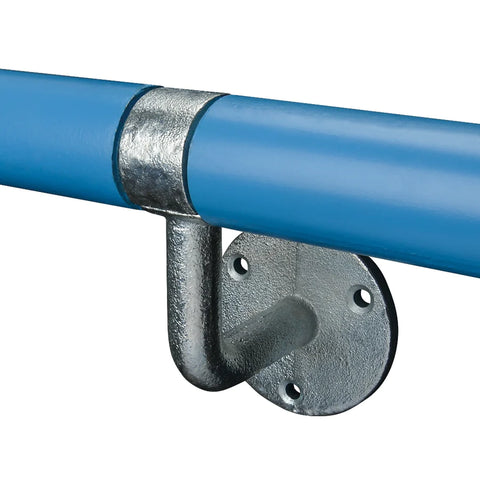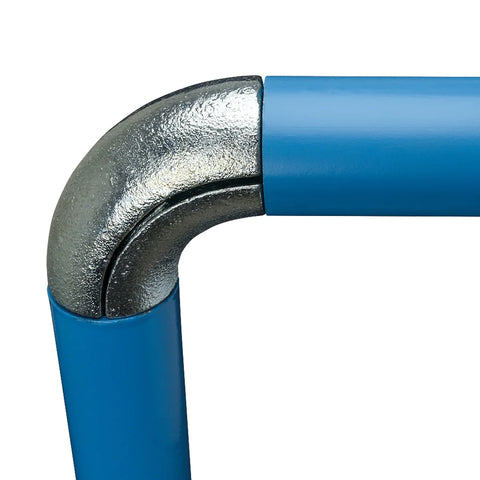Understanding the DDA and Its Relevance
The Disability Discrimination Act (DDA) sets out regulations to ensure accessibility and equal opportunities for individuals with disabilities. Compliance with DDA handrails and key clamp regulations is essential when creating inclusive environments. This comprehensive guide will provide an overview of DDA regulations related to handrails and key clamps, covering key concepts, specifications, installation guidelines, and important considerations.
The Disability Discrimination Act (DDA) is legislation enacted to protect the rights of individuals with disabilities. It requires organisations to make reasonable adjustments to ensure equal access and prevent discrimination in the built environment. Handrails and key clamp systems can be considered reasonable adjustments to comply with the DDA and enhance accessibility.
How does this apply to my business?
Disability Equality Duty; the DDA imposes a duty on organisations to promote equality of opportunity for disabled individuals. This includes providing accessible environments and making reasonable adjustments to eliminate barriers.
Reasonable adjustments refer to modifications or accommodations made to enable disabled individuals to access and use facilities. Installing handrails and using key clamp systems can be considered reasonable adjustments to comply with the DDA and its DDA handrail regulations.
What adjustments should I make?
DDA handrails specifications should include the following:
Height: A DDA compliant handrail should be installed at a height of 900mm to 1000mm from the pitch line or floor level. This ensures that individuals with disabilities can easily reach and use the handrail for support and stability.
Size and Shape: Handrails should have a circular cross-section with a diameter between 40mm and 45mm. The shape should allow for a firm and comfortable grip.
Continuity: Handrails should be continuous, extending beyond the top and bottom of the stairs or ramp for a minimum of 300mm. This ensures that individuals have a consistent handrail to hold onto throughout their journey.
Protrusion: A DDA compliant handrail should not protrude excessively into the accessible route to avoid potential hazards for individuals with visual impairments.
Contrast: Handrails should provide visual contrast with their surroundings to aid individuals with visual impairments. Using contrasting colours can enhance visibility.

Understanding key clamp systems
Key clamp systems offer a versatile and modular solution for constructing DDA handrails, guardrails, and barriers. They consist of galvanised steel tubes and fittings that can be easily assembled and disassembled.
Key clamp systems provide flexibility in design, allowing for customisation to suit specific requirements and DDA handrail regulations. They are easy to install, durable, and can be adjusted or expanded as needed. Key clamp systems are suitable for both indoor and outdoor applications.
Installing key clamp systems
Before installation, assess the site and consider the intended use, location, and specific requirements of individuals with disabilities. Identify areas that require handrails and determine the appropriate key clamp system.
Ensure that the chosen complies with the DDA key clamp handrail regulations, including the specifications mentioned earlier. The system should meet the required height, size, and shape standards.
Follow the manufacturer's instructions for assembling and installing the key clamp system. Ensure that the handrails are securely fixed and provide adequate support and stability.
Regularly inspect the handrails and key clamp system for any signs of damage or wear. Repair or replace any components that are no longer safe or functional. Keep the handrails clean and free from obstacles. If installing handrails outdoors, select materials that are resistant to weathering and corrosion. Ensure that the handrails and key clamp system are securely anchored to withstand outdoor conditions.

Want to know more?
Complying with DDA handrails and key clamp handrail regulations is crucial to ensure accessibility and inclusivity for individuals with disabilities. By understanding the key concepts, specifications, and installation guidelines outlined in this guide, you can create safe and accessible environments that meet the requirements of the DDA. Remember to regularly maintain and inspect DDA handrail fittings, handrails and key clamp systems to ensure ongoing functionality and safety.
For more information on selecting the correct DDA handrail and key clamp systems, simply get in touch with us today, or alternatively browse our DDA handrails, DDA handrail fittings and key clamp systems collections.
